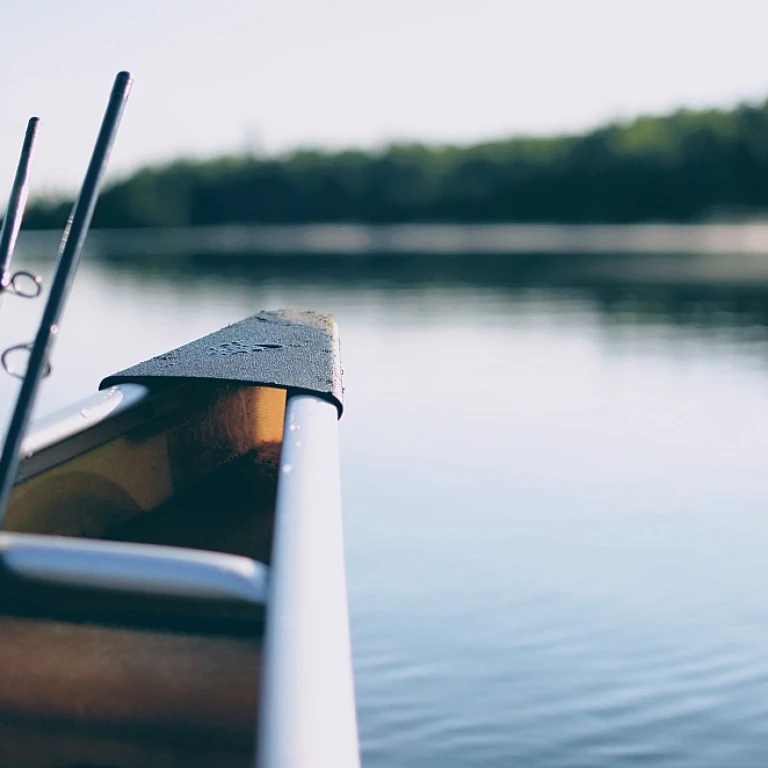The Basics of Reel Sizes
Getting to Know Your Reel Sizes
Understanding reel sizes is fundamental for any angler aiming to make the most of their fishing adventure. It's the first step in ensuring you have the right equipment tailored to your needs, which will ultimately enhance your fishing experience. Reel sizes are generally categorized by numbers like 1000, 2500, 4000, and so on, which is influenced by the reel's function and its capacity to hold line.
For instance, smaller reel sizes such as 1000 to 3000 are typically used for light fishing, accommodating species like trout or panfish. These reels are ideal for ultralight fishing which demands precision over power. They offer a smoother experience when paired with lighter rods and lines. For more insights into choosing the right ultralight gear, you might want to check out this guide on
choosing the right ultralight fishing gear.
On the other hand, larger reels, ranging from 4000 upwards, are designed to handle heavier lines and are suited for chasing bigger game such as bass, pike, or even saltwater fish. Understanding the basics of reel sizes enables you to match with the appropriate rod and line capacity, setting you up for success in various fishing environments.
In the subsequent sections, we'll delve deeper into spinning reels, how to effectively pair them with rods and specific fish species, and navigate through braid and mono capacities. For now, grasping the foundational knowledge of reel sizes places you on the right path to selecting a reel that aligns with your chosen fishing adventure.
Spinning Reels: A Closer Look
A Detailed Examination of Spinning Reels
Spinning reels hold a special place in the hearts of many anglers due to their versatility and ease of use. When embarking on a fishing adventure, understanding the nuances of spinning reels can enhance your experience significantly. This section provides an in-depth exploration of the spinning reel's features, functions, and why they are an essential asset in your gear.
Understanding the Mechanics
The spinning reel is renowned for its open-faced design, which makes casting easier, especially for beginners. The line from the spool comes off in a circular motion, allowing for more controlled and longer casting. It's this design that separates spinning reels from other types such as baitcasters. When selecting a spinning reel, take note of the gear ratio, as it directly impacts retrieval speed, a crucial factor depending on your targeted fish species.
The Versatility Factor
A significant advantage of spinning reels is their adaptability in both freshwater and saltwater environments. They are available in various sizes, allowing you to target a broad spectrum of fish species, from small panfish to larger ocean dwellers. To get the most out of your spinning reel, consider understanding the fundamental differences in fishing environments. For those interested in further expanding their fishing toolkit, examining the ultimate versatility and performance of
center console boats is recommended.
Choosing the Right Reel Type
When picking the right reel type, consider your convenience and comfort. A lighter reel might be ideal for a long day of casting and recasting, reducing arm fatigue. On the other hand, robustness and durability are paramount for more challenging environments or when targeting larger fish. Balancing these factors and aligning them with your angling needs will ensure you choose the most suitable spinning reel for your adventures.
Matching Reels with Rods and Fish Species
Reel and Rod Pairing: The Key to Success
Choosing the right reel size is an important step in optimizing your fishing adventure, but pairing it appropriately with the right rod and targeting the ideal fish species is just as crucial. The synergy between a reel and its rod can greatly influence your casting performance, sensitivity, and the ability to reel in your catch effectively.
First, consider the rod's power and action. Rod power refers to the rod's resistance to bending, ranging from ultra-light to heavy. Generally, lighter power rods work well with smaller reels designed for catching smaller fish species, such as panfish or trout. On the other hand, heavier power rods are compatible with larger reels typically required for bigger species like pike or bass.
Action, on the other hand, describes how quickly the rod returns to its neutral position. Fast action rods bend primarily at the tip and are ideal for quick hooksets and increased sensitivity. They pair well with medium-sized reels for vigorous species like bass. Conversely, slow action rods bend more deeply and work best with smaller reels, offering a longer casting range suitable for trout or walleye.
When you match your reel to the rod based on the reel's capacity, think about the line you'll be using. A reel's line capacity determines the maximum length and strength of the fishing line it can handle. For example, reels that support higher braid and mono capacities can accommodate heavier lines, which are necessary when fishing for large and powerful species.
Lastly, the fish species you're targeting should drive your pairing choice. Fishing for larger or more aggressive fish demands reels and rods that can withstand greater pressure and strain. For a deeper dive into enhancing your fishing strategies, you might find some
crispy delights insightful while relaxing and planning your next fishing trip.
In conclusion, mastering the art of matching reels with rods and fish species ensures not only the effectiveness of your equipment but also elevates your overall fishing experience. This balance is what ultimately leads to a successful and satisfying catch.
Exploring Braid and Mono Capacities
Understanding Line Capacities: Braid vs. Mono
As you navigate the waters of reel sizes, understanding the line capacities of braid and monofilament is essential to enhancing your fishing experiences. Not all lines are created equal, and each has its unique features and benefits.
When it comes to braid lines, they are known for their thin diameter, superior strength, and minimal stretch. This allows anglers to spool more line onto a reel of the same size compared to monofilament. The thinness of braid lines also means less water resistance, providing you with better casting distance and accuracy.
On the other hand, monofilament lines offer flexibility and can be more forgiving during cast or retrieval errors. They tend to absorb more impact, which can be useful when targeting species known for strong, sudden movements. Although thicker than braid, monofilament is often favored for its ease of use and versatility across different fishing conditions.
When choosing your reel, consider the line capacity it supports, specifically how many yards of each type of line it can comfortably hold. Certain sizes accommodate specific fishing scenarios—whether you're bottom fishing with mono or opt for longer casts with braid, knowledge of your reel’s line capacity is pivotal.
Balancing the reel size with the type of line not only optimizes your gear setup but also ensures you're prepared for the type of fish you aim to catch. As discussed in previous sections, taking into account your rod's match with your reel and the intended fish species can make a significant impact on your success.
Incorporating precise line capacities into your considerations can feel complex, but once mastered, it frees you to focus on the thrilling nuances of the sport, optimizing every adventure at sea or by the riverbank.
Rated Stars and Reviews: What to Consider
Key Considerations When Evaluating Reel Ratings
When you're navigating the marketplace in search of the ideal spinning reel, a critical aspect to assess is the ratings and reviews provided by fellow anglers. These insights can offer a wealth of information that might not be immediately obvious through product descriptions alone. It's essential to understand what makes a particular reel stand out or, conversely, why it might fall short when put to the test.
First and foremost, focus on the durability feedback from anglers who use reels under varying conditions. A reel might have the perfect specifications on paper, but how does it hold up after extensive use in different environments? Durability can vary greatly based on material and design, so consider this as a priority.
Additionally, pay attention to how well a reel performs with the line capacities discussed earlier. A reel that claims to support certain braid or mono capacities should meet these expectations in practice, ensuring a smooth fishing experience.
User experiences often highlight issues that might not affect every angler, depending on individual usage patterns. For instance, someone targeting bigger fish with a medium-sized reel might offer insights relevant to those planning similar fishing adventures. These reviews can therefore help match reel capabilities with specific fishing conditions or techniques.
Lastly, consider the ease of maintenance and customer service experiences shared by reviewers. Reels that are easy to maintain or come with reliable customer service can save you from potential headaches down the line.
While reviews are invaluable, remember that personal preferences and fishing styles significantly influence what makes a reel "the best" for you. Comparing these experiences with your own needs will guide you toward a more satisfying purchase.
Choosing the Best Spinning Reel for You
Identifying Your Priorities and Preferences
Selecting the ideal spinning reel can feel like navigating a labyrinth of choices, but honing in on your specific needs and preferences can illuminate the path. Reflecting on the essentials you've gathered from understanding reel sizes, spinning reels, and matching them appropriately with rods and fish species ensures you make a well-informed decision.
Do you prioritize durability, aiming for a reel that withstands the test of time and laborious fishing conditions? If so, focusing on materials and construction is critical. Heavy-duty reels often utilize metals like aluminum or stainless steel, offering robust performance. However, if you value lightweight equipment for those long angling days, consider reels with composite materials that deliver endurance without the extra burden.
Balancing Quality and Budget
Another crucial aspect is aligning your choice with your budget, all while ensuring quality doesn't take a backseat. The market is teeming with options that cater to various price ranges, so even if you're not breaking the bank, it's still possible to nab a high-performing reel. Explore well-reviewed brands and consider user ratings as your guiding light. Remember, a higher price doesn't always equate to superior quality.
Incorporating Braid and Mono Capacities
Additionally, take into account the type of line you'll be using. Your exploration of braid and mono capacities sheds light on which reel suits your chosen line better. If your gear often includes braided line, opt for a reel with a higher line capacity and a smooth drag system—enhancing both efficiency and effectiveness during your fishing escapades.
Rated Stars and User Reviews
Lastly, don't undervalue the insight user reviews and ratings provide. These not only highlight the reel's strengths but also illuminate potential issues you might face. Be mindful of the recurring themes and common praises or complaints; they often point out genuine advantages or shortcomings. Such real-world feedback can be invaluable, bridging the gap between speculation and application.
With all these considerations in hand, you are well on your way to finding the spinning reel that seamlessly complements your fishing journey, maximizing both enjoyment and success on the water.

